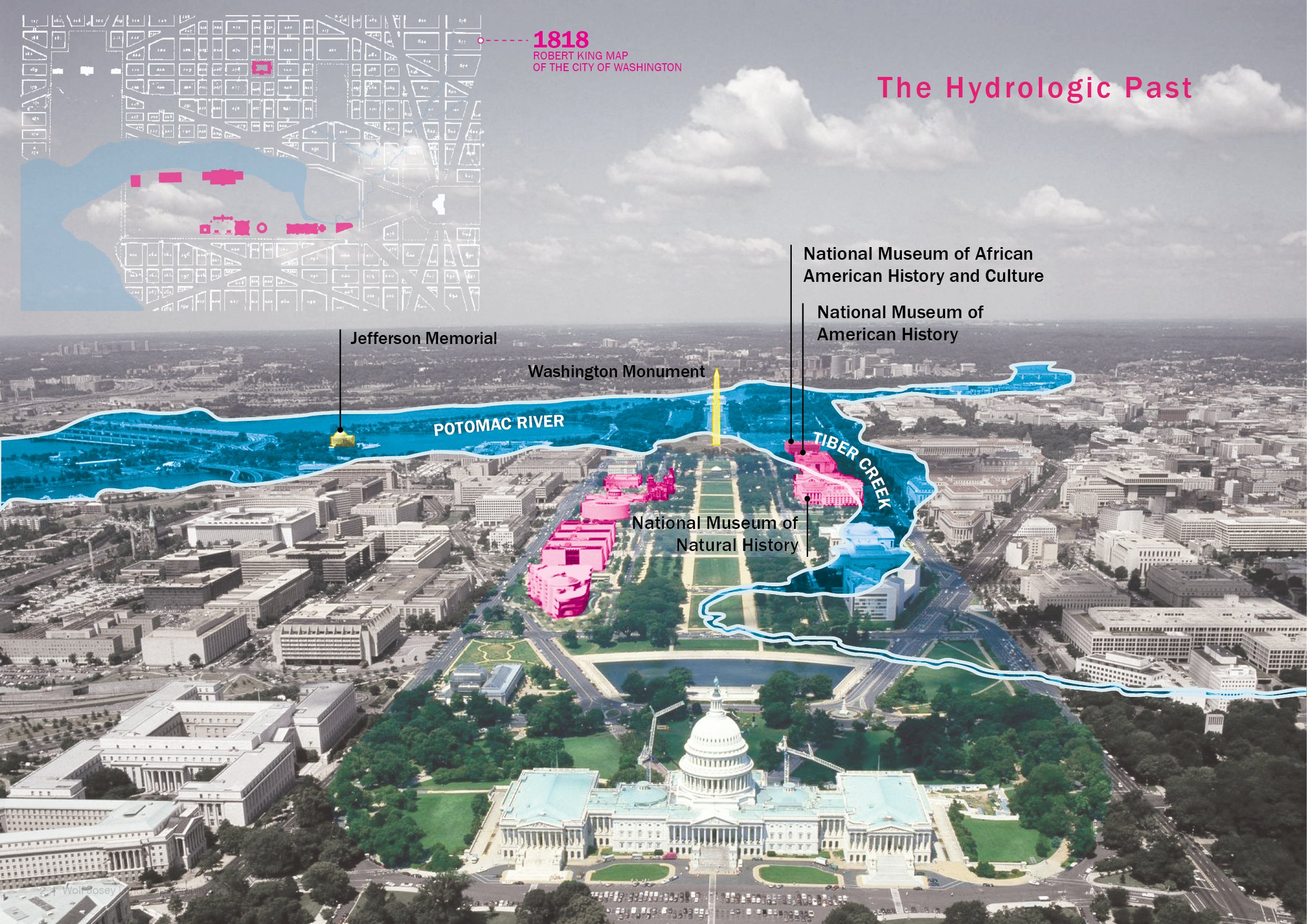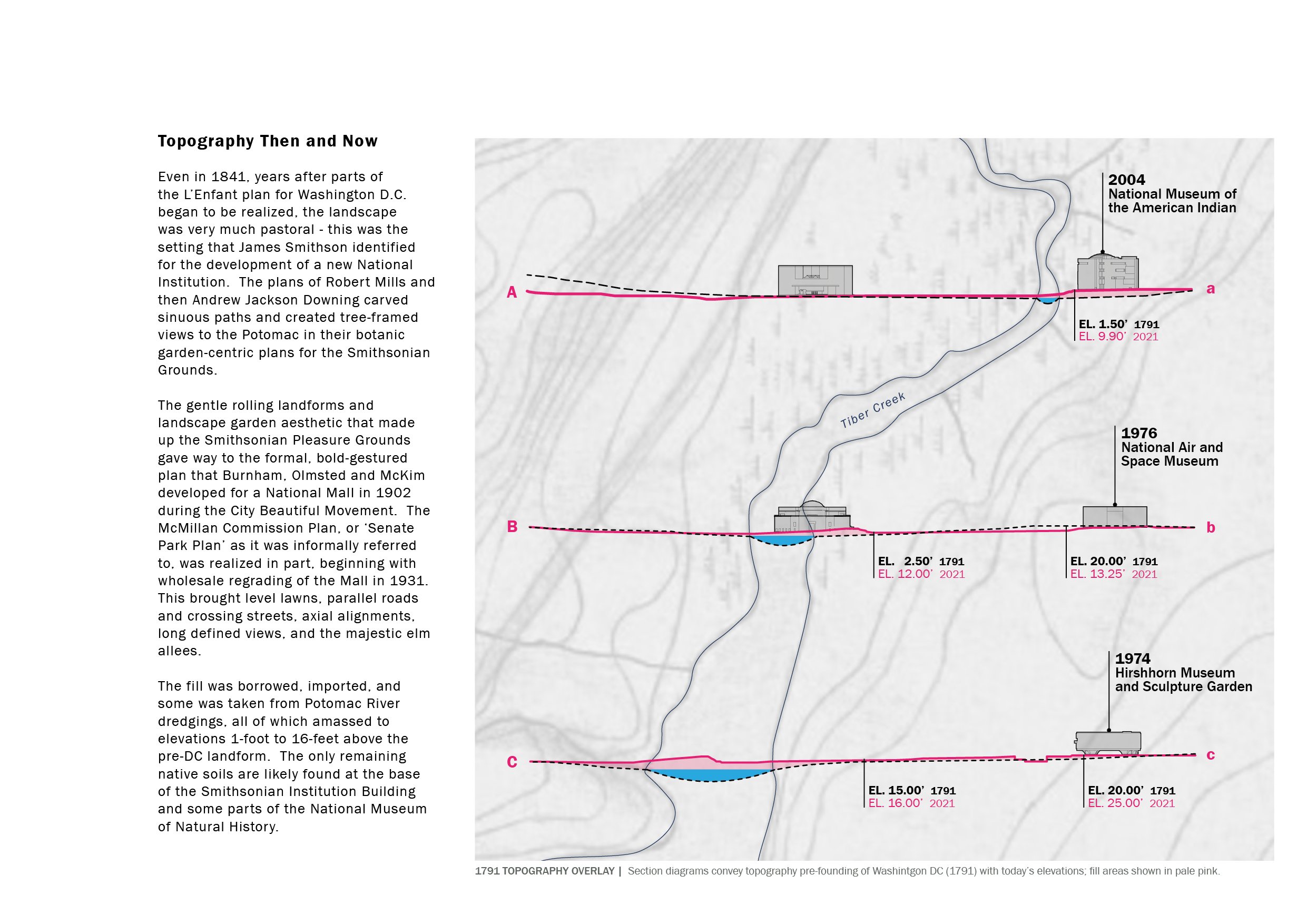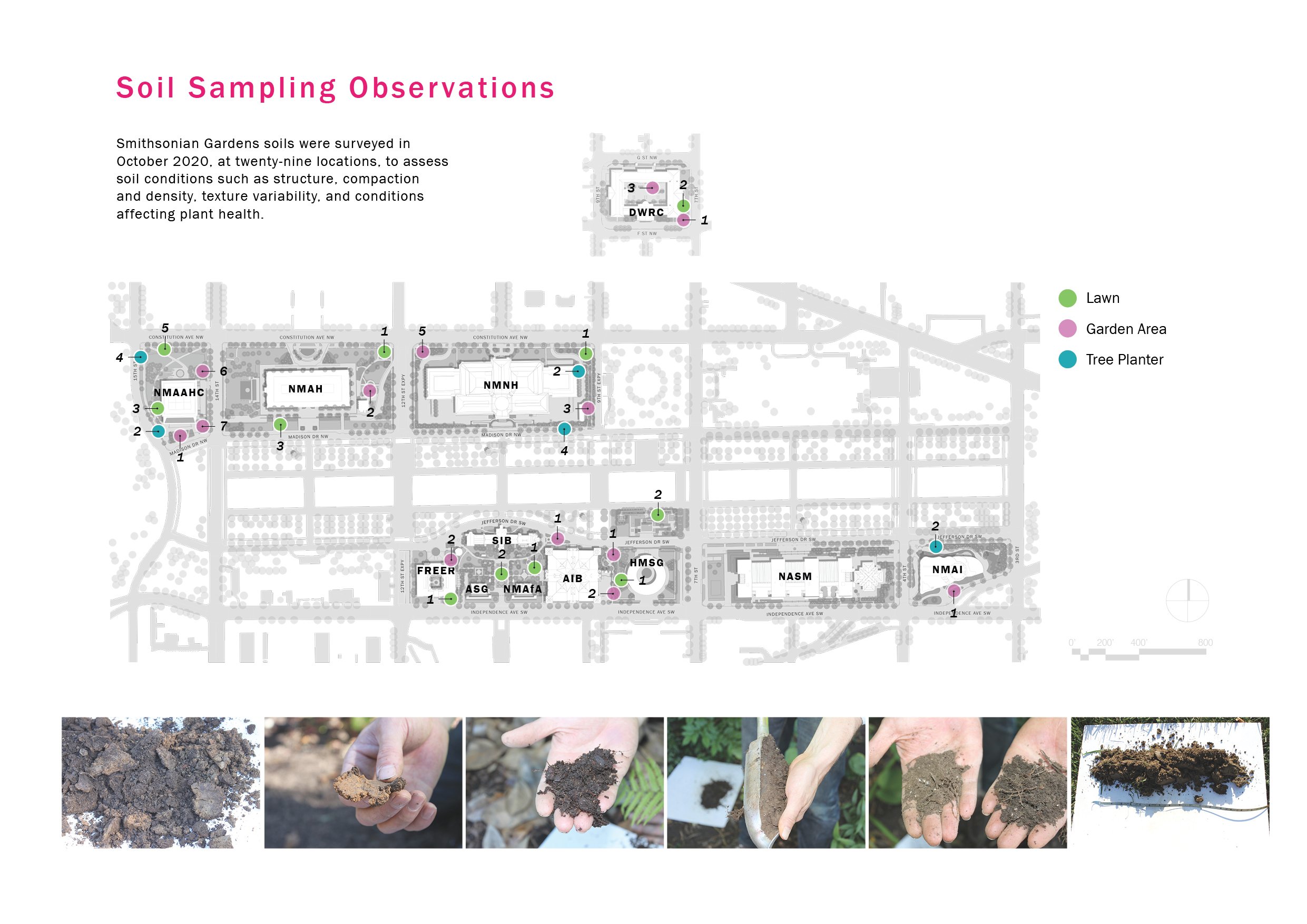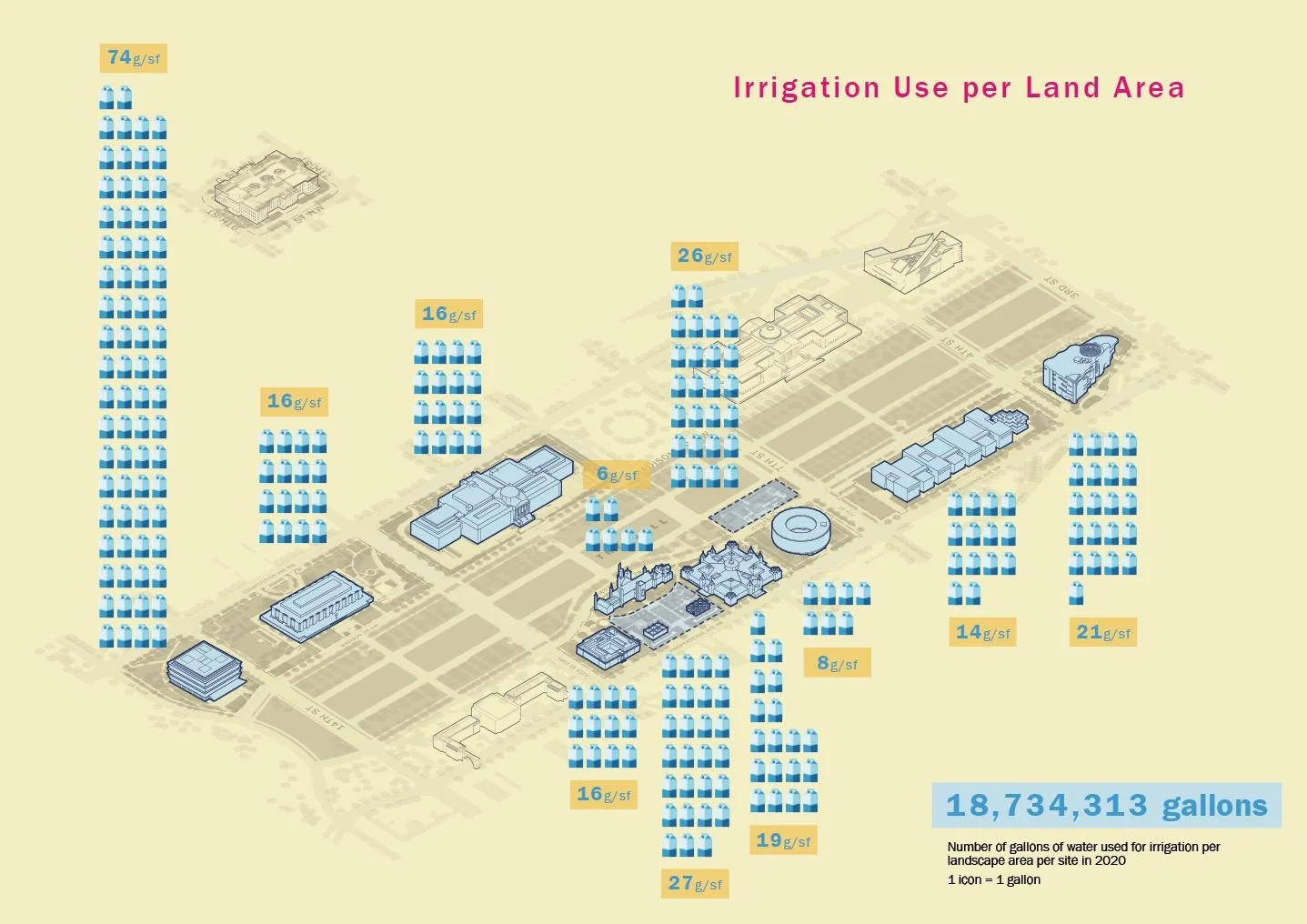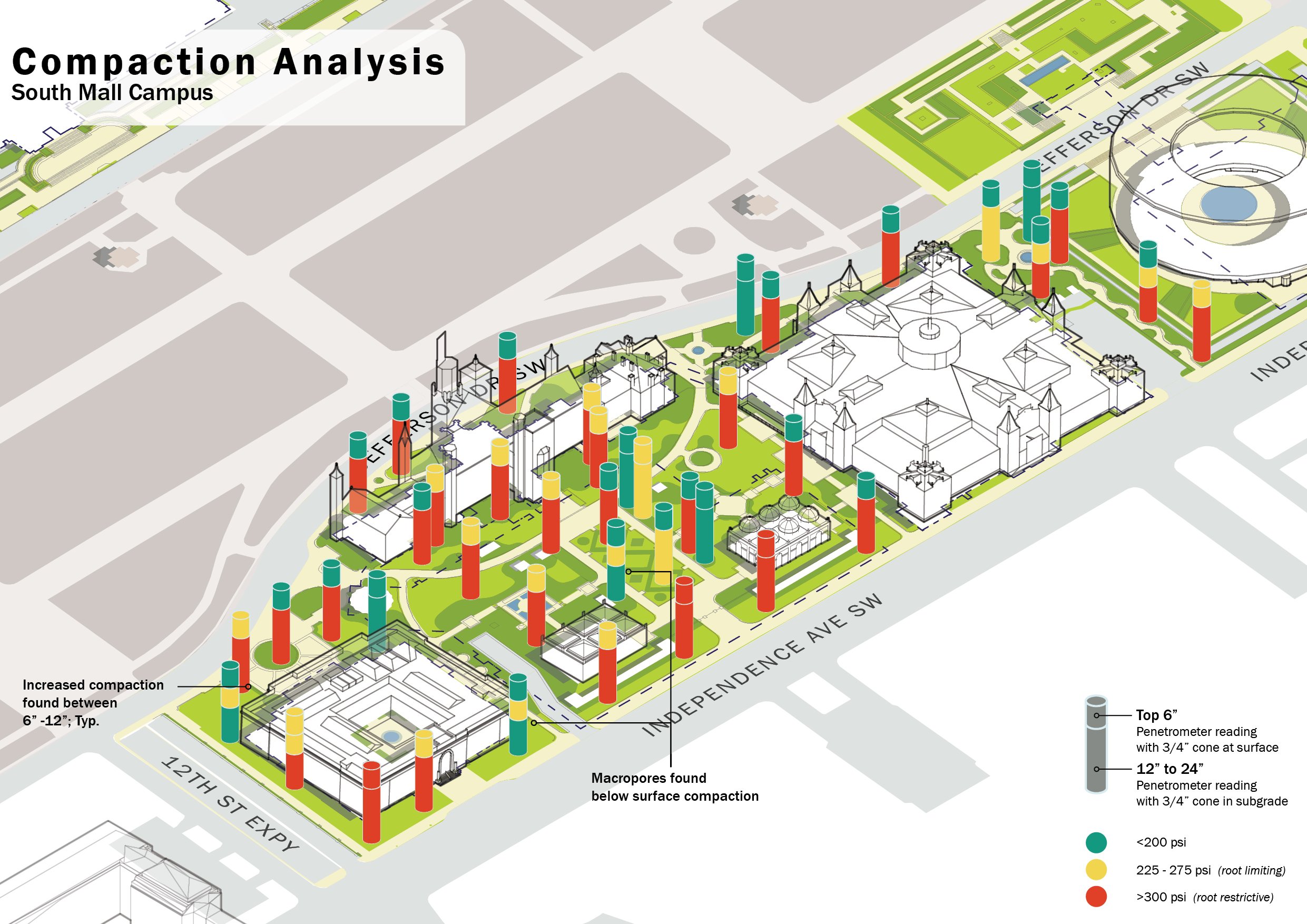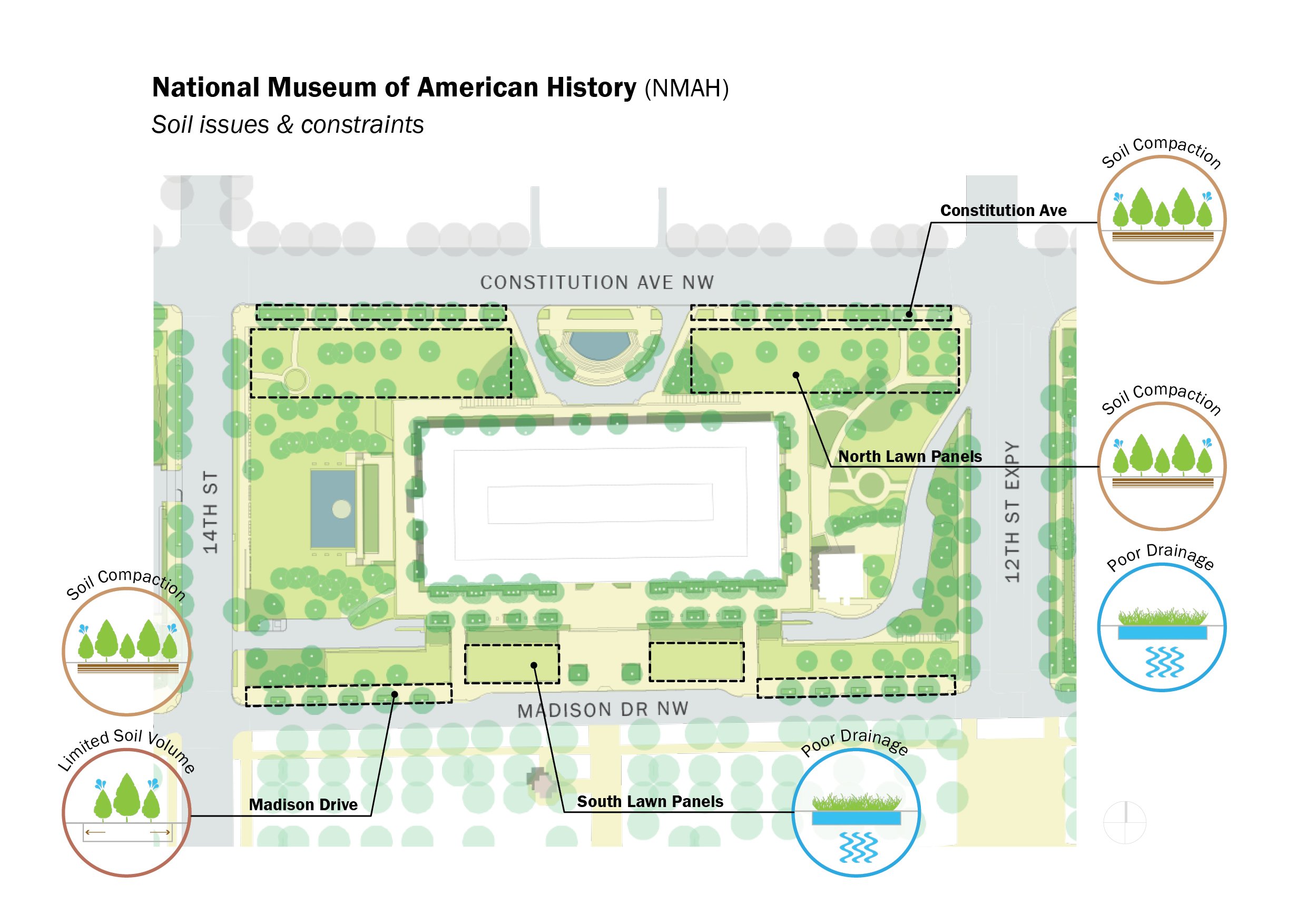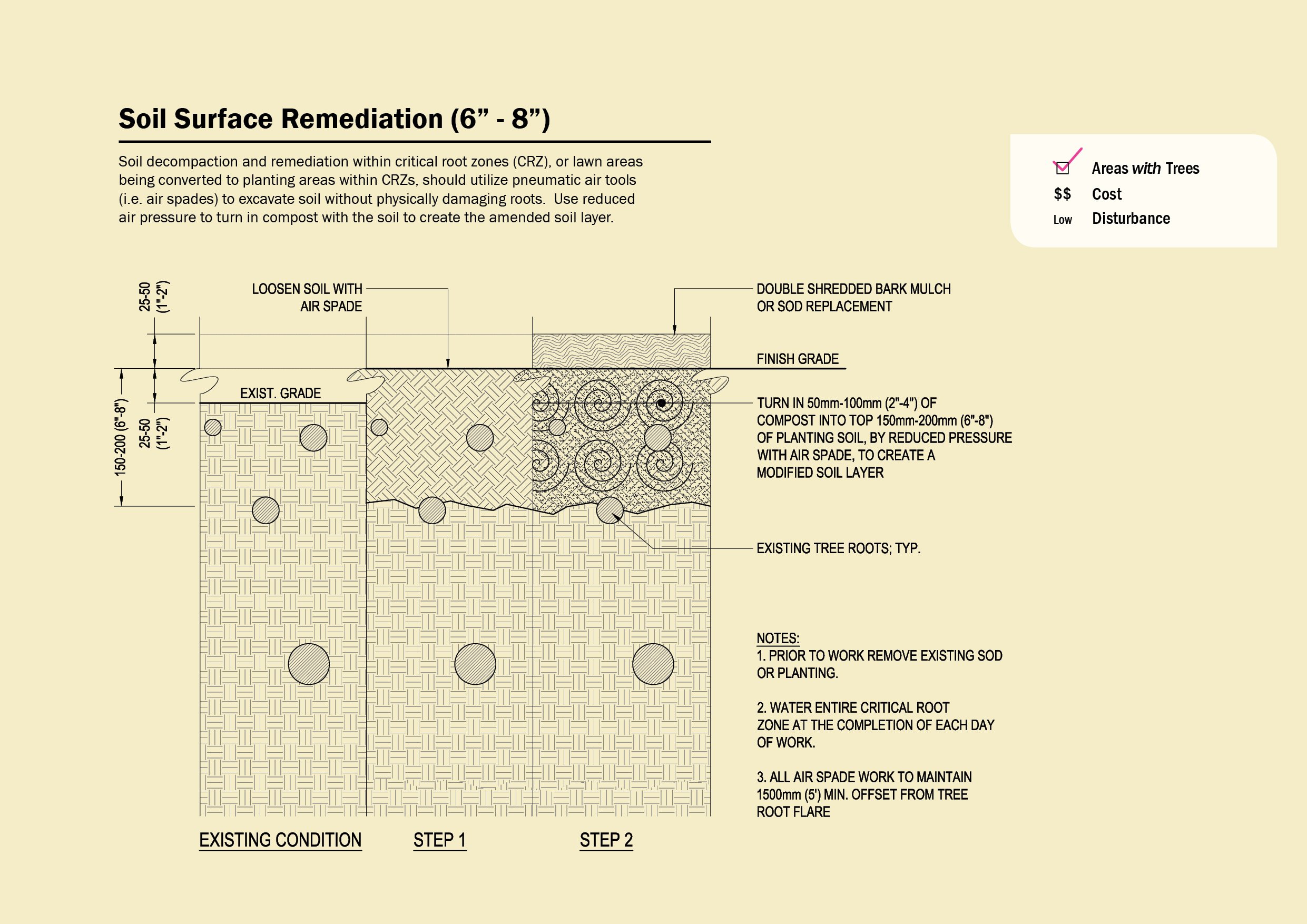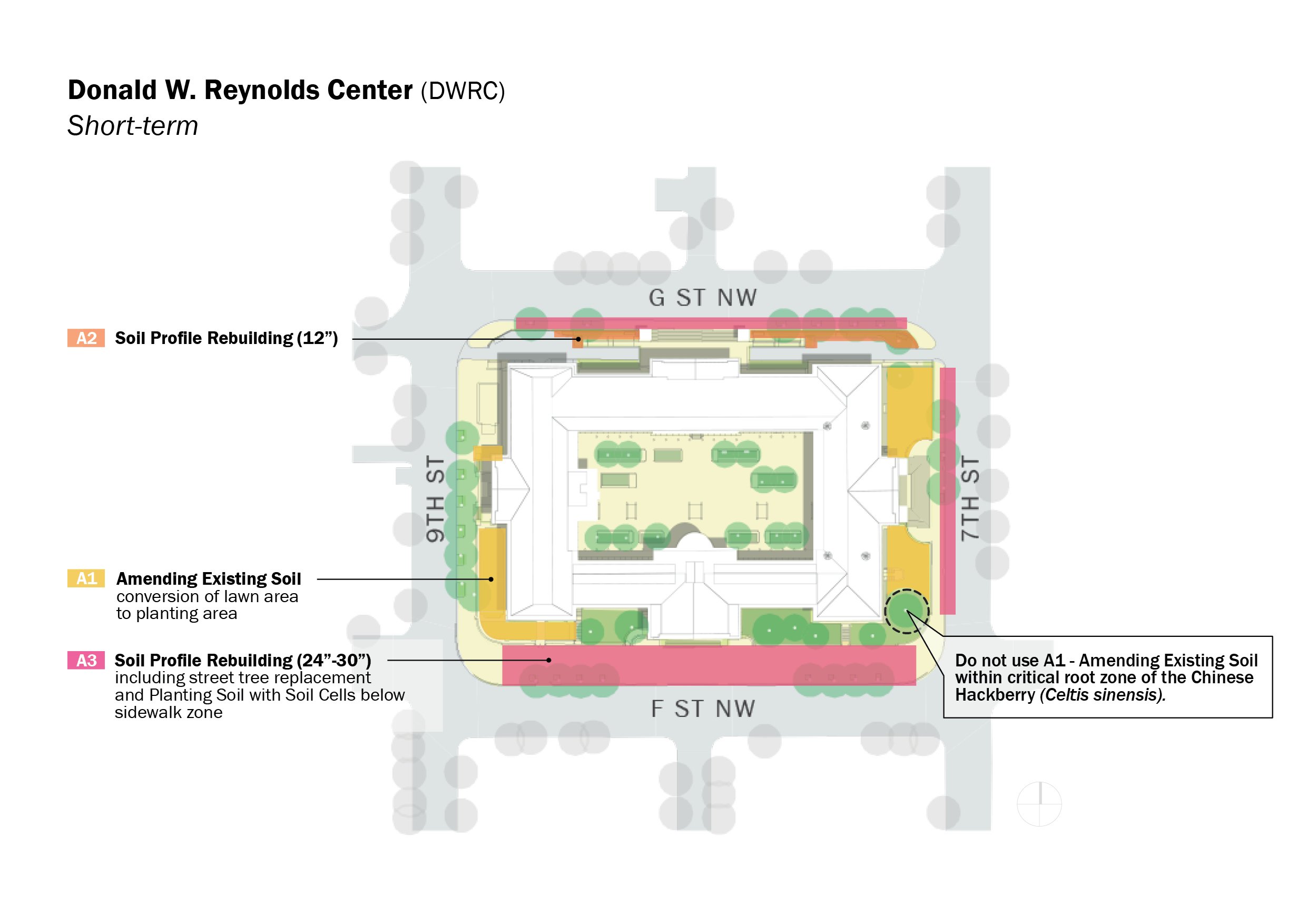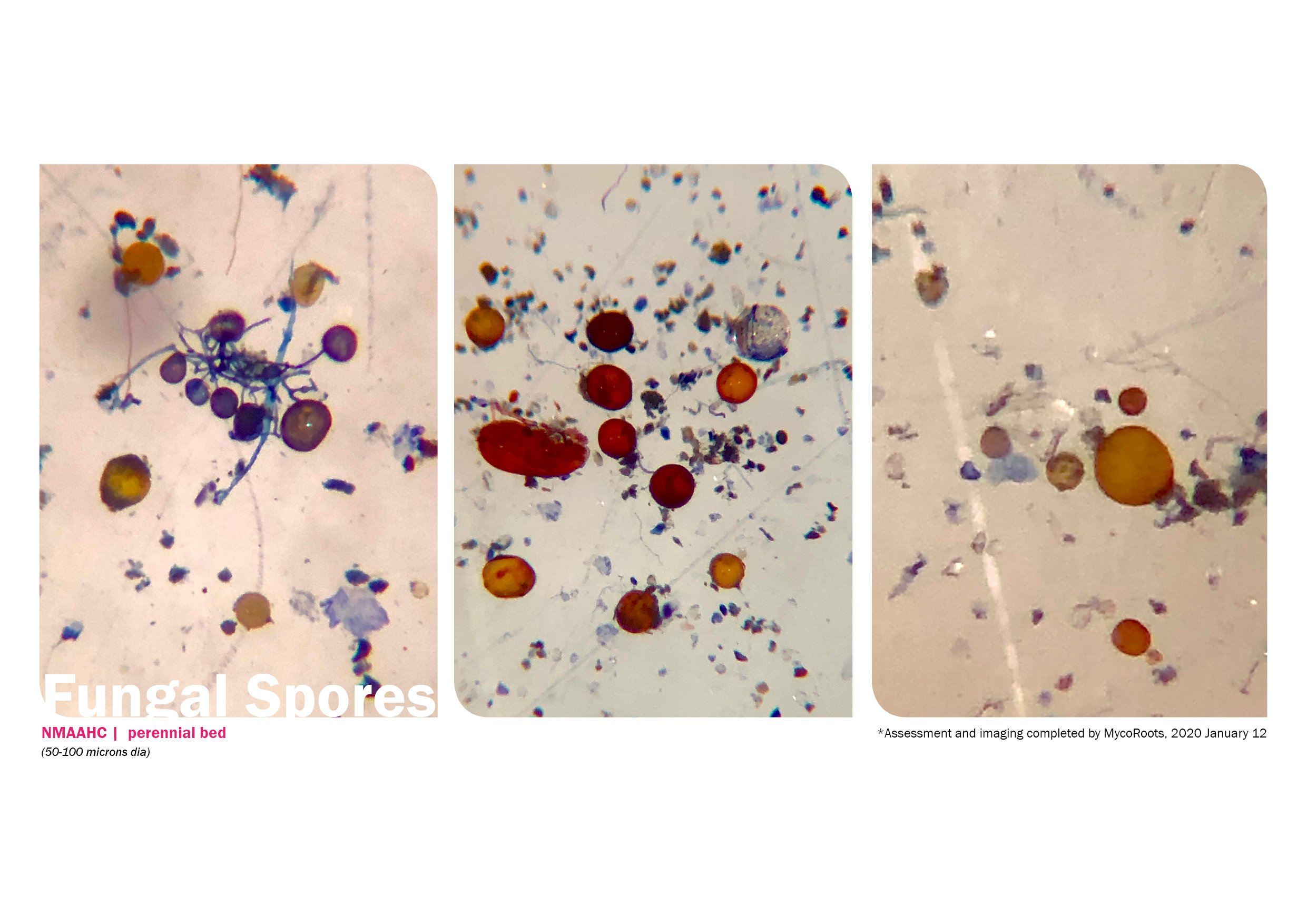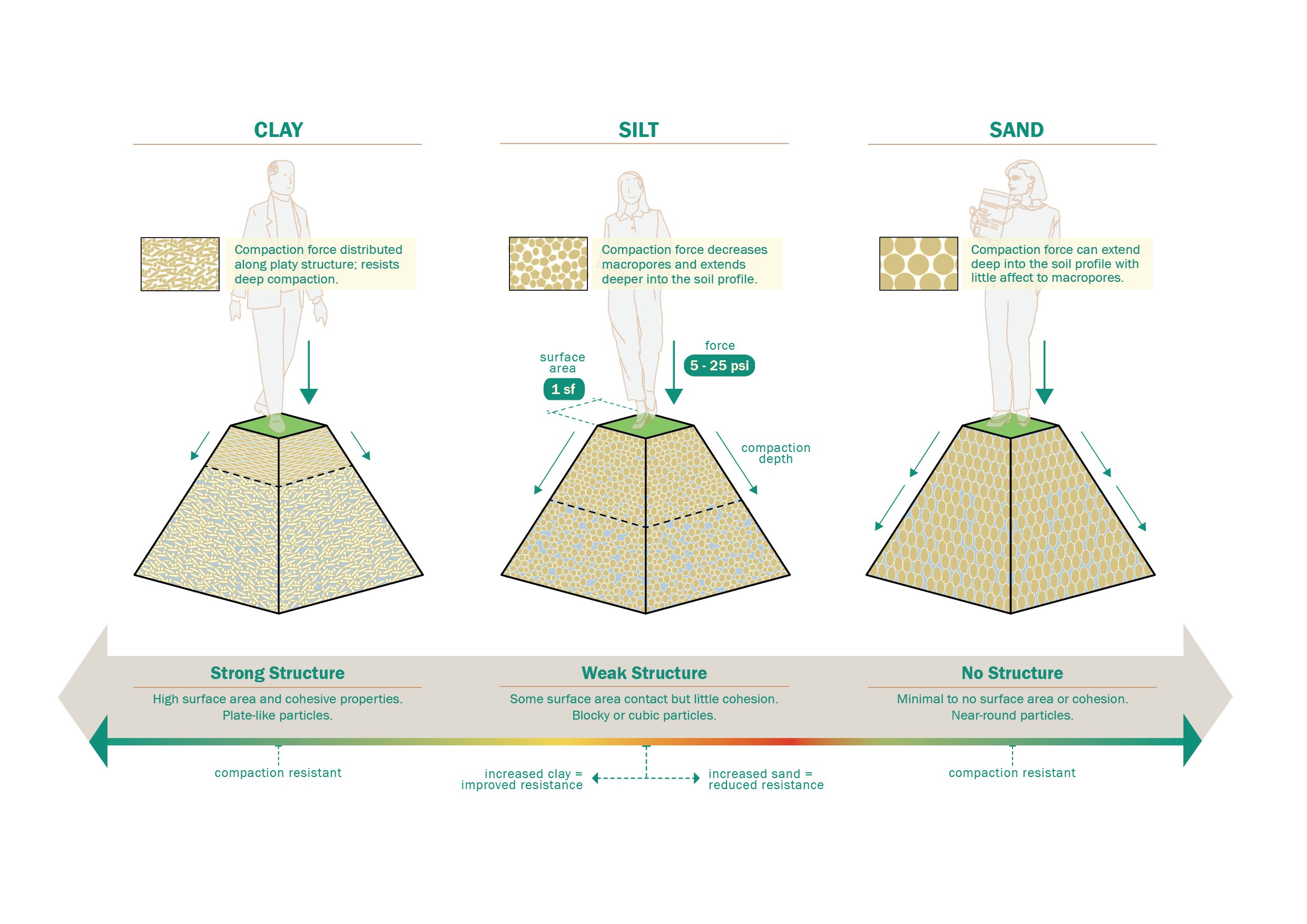Smithsonian Gardens
Location: Washington, DC
Status: Completed 2020
Awards: 2022 VA ASLA Honor Award
A concern for garden sustainability in the face of climate change, ongoing construction, and increasing visitorship led Smithsonian Gardens to examine its soils and the impact heavily-used engineered soils were having on plant health and maintenance. In 2020, Smithsonian Gardens commissioned Wolf Josey to address the overall health of their collections from the ground up – to assess the soils in all the museum gardens and to provide a comprehensive document outlining a sustainable approach to future soils installations, streamlining existing maintenance practices and improving poorly performing soils.
This effort resulted in a Soils Management Plan, a public document and resource for Smithsonian Gardens. To address poor soil performance and future work, the Landscape Architect established a clear framework for assessing health and managing existing soils, identifying and remediating poor-performing soils, and installing and protecting healthy planting soils on all future projects. These principles and recommendations were collected in a legible toolkit for use by staff, designers, and contractors alike.
Over the course of the project, a significant finding revealed that naturally occurring loam soils provided stability for optimal plant growth and protection against adverse impacts. They evidenced better nutrient and water-holding capacity and relied less on irrigation and fertilization. They also support soil microbial communities essential for plant uptake and sustained growth. Finally, these soils typically have characteristics (soil clay content, structural stability, and innate organic matter) that favor a stable aggregate structure, effective drainage, and compaction resistance.



